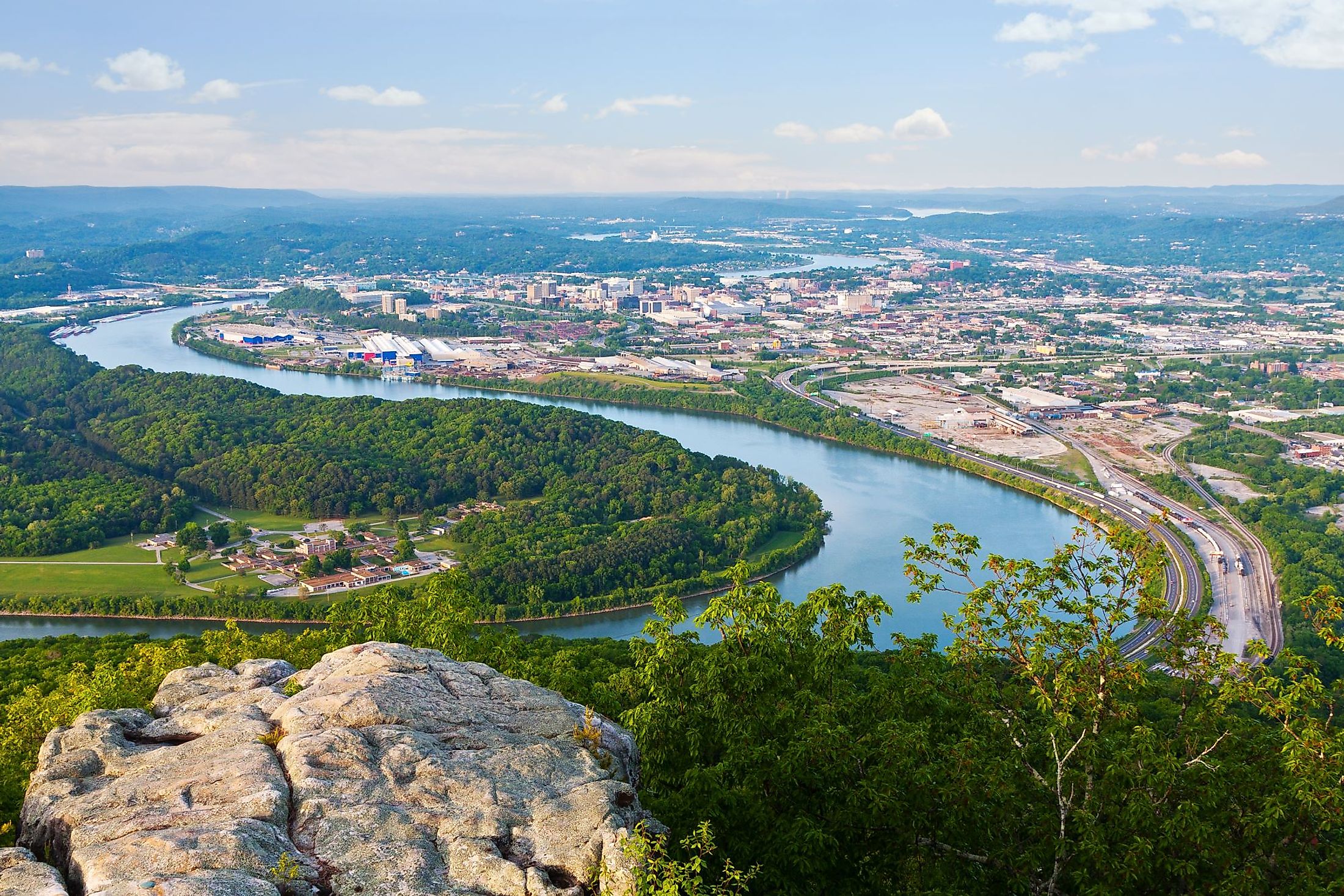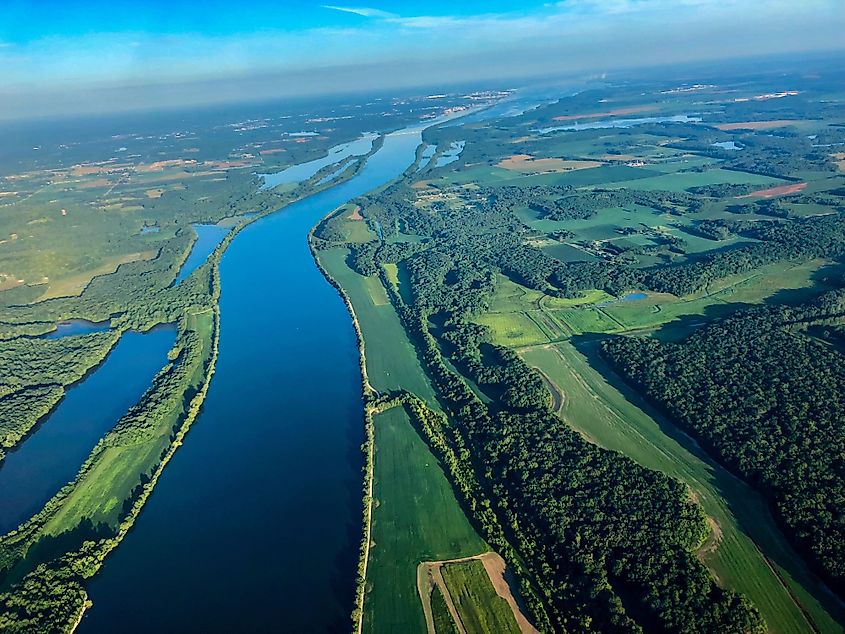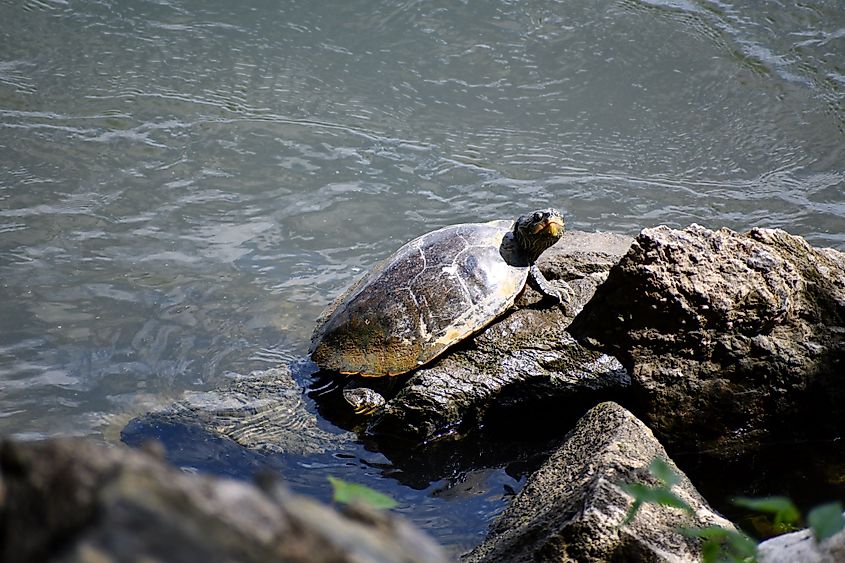
Tennessee River
The Tennessee River is a 1,049-kilometer river in Tennessee Valley, in the southeastern United States. Originally known as the Cherokee River, the Tennessee River is a major waterway of the southeastern United States and one of the world’s most prominent hydropower and irrigation systems. The river originates in Knoxville, Tennessee, and discharges into the Ohio River, several kilometers upstream from the Mississippi River. The indigenous Cherokee people of the Southeastern Woodlands of the US, were based along the banks of the Tennessee River, particularly East Tennessee and Northern Alabama. Their presence in these areas led the river to be known as the Cherokee River. However, its current name is derived from “Tanasi”, a Cherokee town located on the Tennessee side of the Appalachian Mountains. Several dams have been built on the river since the 1930s which led to the formation of an area called the Land Between the Lakes - a National recreation area in Kentucky and Tennessee.
Course

The river originates in Knoxville, Tennessee at the confluence of the Holston and French Broad rivers. It flows southwest into Chattanooga after passing Eastern Tennessee and then crosses into Alabama. After that, it travels through Huntsville and Decatur in Alabama, reaching Muscle Shoals, the largest city in Colbert County, Alabama. Before returning to Tennessee, it forms a small part of the Mississippi border with Tennessee. The river’s northern route through Tennessee forms the boundary between two of Tennessee’s Grand Divisions, the Middle and West Tennessee. Finally, the river runs north through western Kentucky, separating the Jackson Purchase from the rest of the state. The Tennessee River waters meet the Ohio River at Paducah, Kentucky of McCracken County.
History

There has been a historical dispute as to the actual headwaters of the Tennessee River. For example, the mouth of the Little Tennessee River, a tributary of the Tennessee River, was considered to be the origin of the latter in the late 18th century. During the 19th century, the Clinch River at Kingston was presumed to be the headwaters of the Tennessee River. In 1889, Kingsport of the Holston River was designated as the origin of the river by a declaration from the Tennessee General Assembly. However, a federal law that was enacted the following year changed the river’s origin to its current location. The Tennessee River was not widely used during the Civil War as a military route although the Union army used it as a route to transport troops by water. In general, the river’s role as a westward passage was of low importance compared with the lower course of the river from the Ohio River. However, the north-flowing lower course had some strategic importance during the American Civil War as it offered an invasion route into the western Confederacy. Today, the Tennessee River is a prominent waterway of the Great Loop which is a system of waterways that includes the eastern United States and a part of Canada. The river also served as a major highway for riverboats through the south, which is frequently used today on the river. Prominent ports include Chattanooga, Guntersville, Decatur, Yellow Creel, and Muscle Shoals.
Biodiversity

The Tennessee River supports a diversity of freshwater fishes and mussels, particularly in the Upper Tennessee River basin. The river basin is home to 174 species of fish and 85 species of mussels. However, damming and reservoir impoundment leading to habitat destruction have eliminated 25 mussel species from the river, eleven of which are believed to be extinct today. In general, the diversity of species in the river is slowly declining due to toxic spills in certain parts of the basin.











